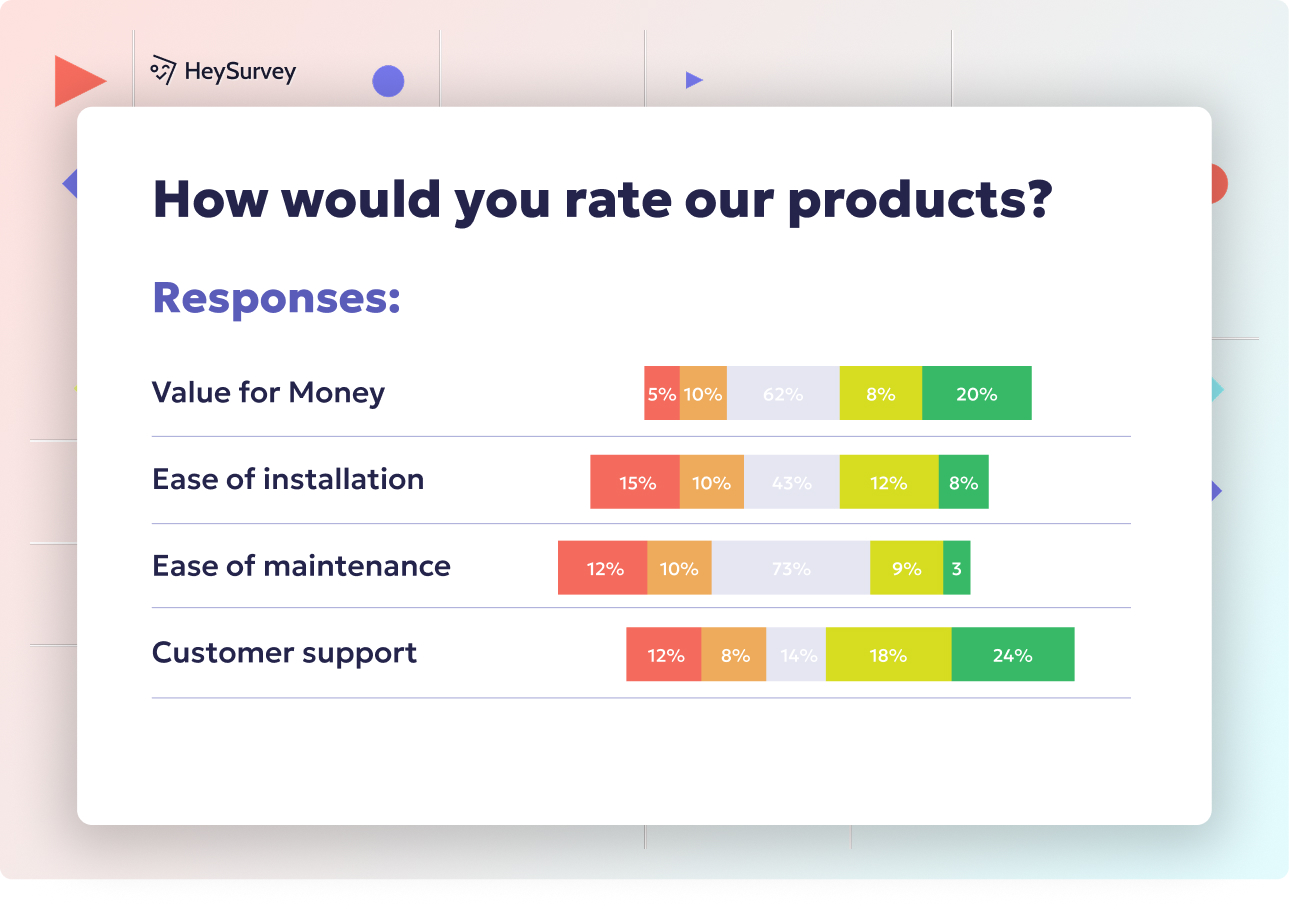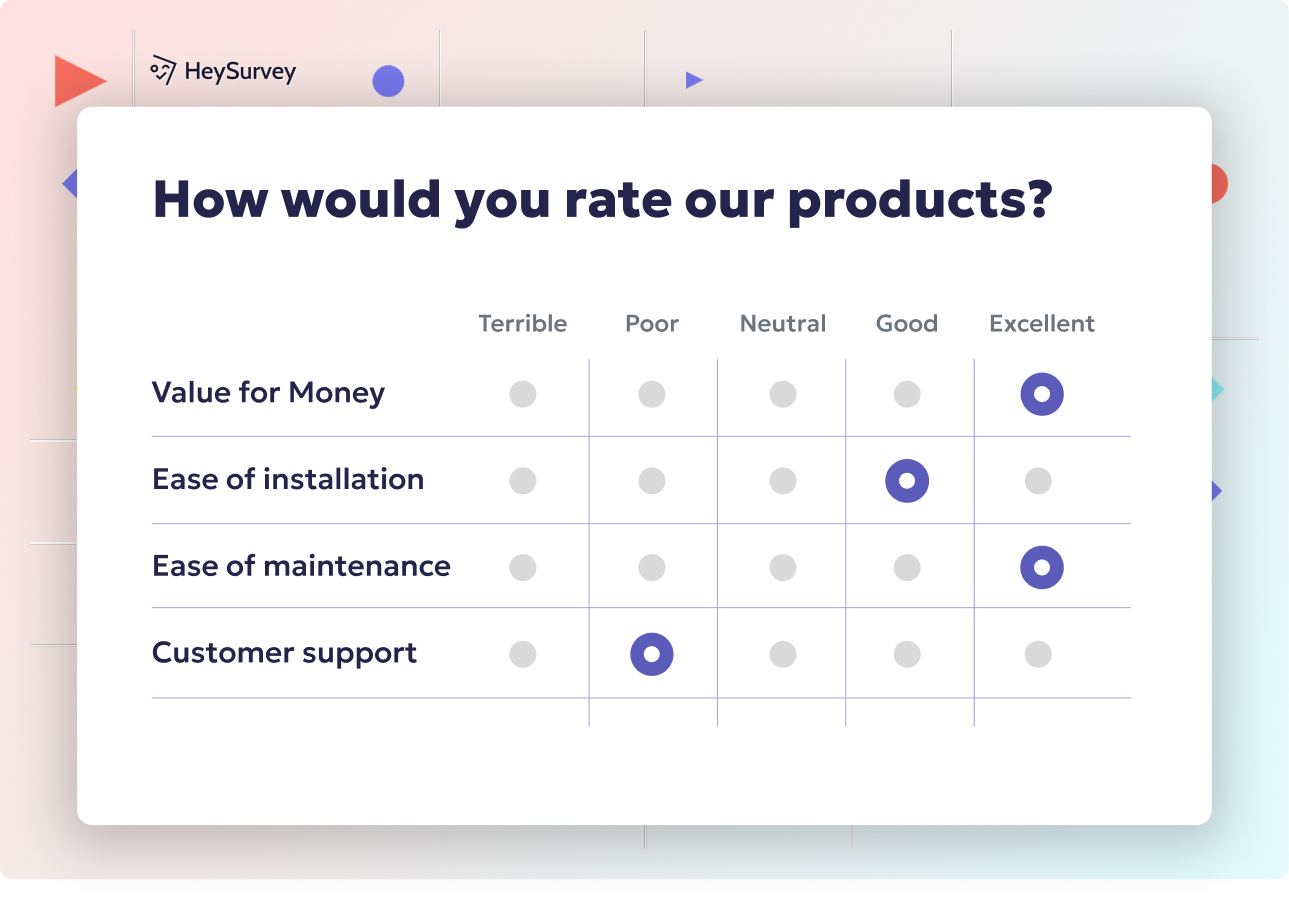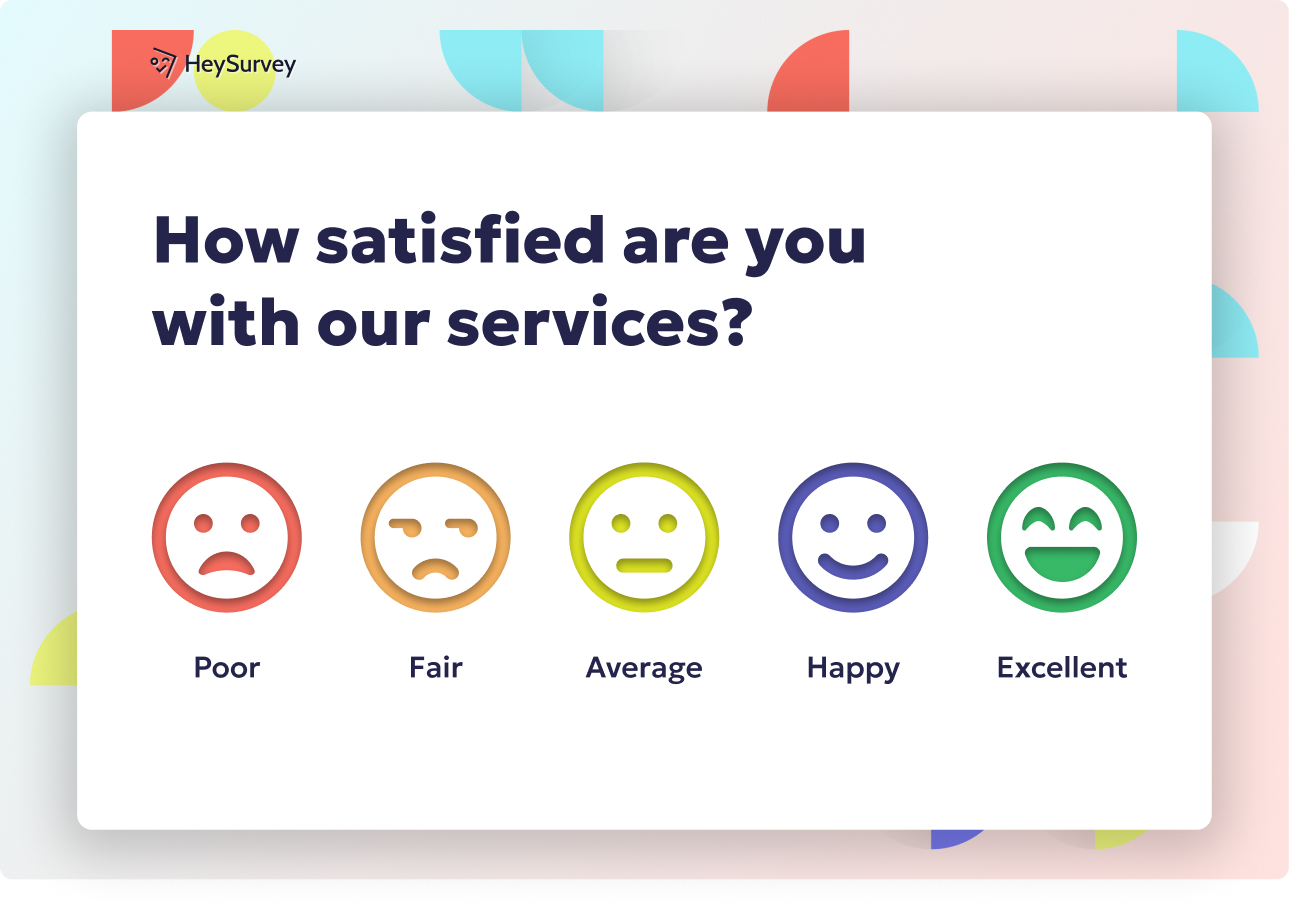32 Game Survey Questions: 6 Proven Types to Boost Player Insights
Discover 6 proven game survey questions types with 30+ sample questions to boost player insights, engagement, and monetization effectively.
Every great game begins with a question. Want to reduce churn, supercharge engagement, or turbo-boost your monetization tactics? Stop guessing and start listening. Game survey questions are your cheat code—tapping into player feedback from pre-alpha brainstorms right through to post-launch patches. Whether you’re an indie developer looking for those first five-star reviews or a AAA studio plotting your next esports hit, smart surveys unlock insights that keep players coming back for more.
Gameplay Experience Survey
Why & When to Use
Feeling lost in a sea of post-launch feedback? The gameplay experience survey is your lifeline. If you want to spot exactly where rage-quitting players slam their keyboards or controllers, deploy this survey during closed beta and after major patches. It cuts through the noise and shines a spotlight right on your game’s heartbeat—core mechanics, balance, and moment-to-moment fun.
These surveys aren’t just for bug-chasing. Use them to fine-tune difficulty curves, smooth out control issues, and tweak your core gameplay loops before minor aches become chronic pains. It’s a developer’s best friend when balancing fresh content or evaluating new features that just hit the public servers.
You’ll get the most value when players are deeply engaged but honest—think right after a long session, intense update, or new mode. Here’s how these surveys stack up:
- Uncover frustration points that tank session length
- Identify which mechanics strengthen loyalty and engagement
- Pinpoint platform-specific performance issues
- Gather actionable feedback to polish your next big patch
5 Sample Questions
On a scale of 1–10, how satisfied are you with the game’s difficulty progression?
Which in-game mechanics felt least intuitive and why?
How often did you experience performance issues such as lag or frame drops?
Rate the responsiveness of the controls for your preferred input device.
Describe one feature that most improved your overall enjoyment.
Regular gameplay experience surveys do more than highlight flaws—they shine a light on the moments that spark true joy and get players talking. Use these insights to iterate quickly, keeping your fans thrilled and your critics (mostly) at bay.
The Game Experience Questionnaire (GEQ) is a validated tool that measures player experience across seven dimensions, including immersion, flow, and competence. (game-evaluation.github.io)

How to Create a Survey with HeySurvey in 3 Easy Steps
Ready to gather player insights for your game survey but new to HeySurvey? No worries! Here’s your simple 3-step guide to get your survey up and running in no time. Plus, we’ll toss in some bonus tips to make your survey look sharp and work smarter.
Step 1. Create a New Survey
- Head over to HeySurvey and start by creating a new survey.
- You can choose between an empty sheet to build from scratch or pick a pre-built template to jump-start your game survey.
- For the fastest start, click the button below the instruction to open a ready-made template tailored for player feedback surveys.
- Once opened, you’ll land in the Survey Editor where you can rename your survey to something easy to spot later, like “Gameplay Experience Survey.”
Step 2. Add Questions
- Click on the “Add Question” button at the top of the editor or between existing questions to start building your questionnaire.
- Choose from various question types like Scale (for ratings), Choice (single or multiple answers), or Text (open-ended feedback).
- Customize your question text with clear, friendly wording—remember, a simple question gets better answers!
- Mark questions as required if you want to make sure every important question gets an answer.
- You can even add images or gifs to bring your survey to life and keep players engaged.
Step 3. Publish Survey
- When your questions look good and the flow feels right, hit the Preview button to see exactly how your players will experience your survey.
- Adjust any design or wording if needed using the Designer Sidebar for colors, fonts, and layouts.
- Once you’re happy, click Publish to get your survey’s shareable link.
- Note: You’ll need a HeySurvey account at this point to publish and access response data later.
Survey’s live and ready to collect those juicy player insights!
Bonus Steps for Leveling Up Your Survey
Apply Branding:
Add your game logo or studio branding for a pro look that makes your survey instantly recognizable and trustworthy.
Define Settings:
Configure start/end dates, response limits, or decide if players see results right after completing it. You can also set where respondents go next, like your game website or update notes page.
Skip into Branches:
Use branching to tailor the survey path based on player answers. For example, if a player struggles with the tutorial, branch them to more detailed onboarding questions without bogging down everyone else.
With these simple steps, even if HeySurvey is new to you, your game surveys will be up and running in minutes—ready to capture real, actionable player feedback!
Player Onboarding & Tutorial Survey
Why & When to Use
No one wants to feel like they need a PhD in rocket science just to play your game. That’s why the player onboarding and tutorial survey is essential, especially right after the first-time user experience (FTUE). It helps you catch confusion before it turns into an uninstall. With clear feedback on tutorials, UI prompts, and your overall learning curve, you’ll spot clutter, detect gaps, and see where players crave a helping hand.
Running these surveys at the right moments makes all the difference. Fire one off:
- After a player completes their first mission or tutorial sequence
- When rolling out new beginner-friendly features or reworked tutorials
- Any time you notice spikes in early-game drop-off or negative reviews referencing confusion
An easy-to-understand onboarding process is more than a feel-good moment; it’s critical for reducing abandonment and building loyal fans from the very first click.
By homing in on clarity, complexity, and readiness, these surveys help:
- Trim unnecessary steps and speed up onboarding
- Surface common sticking points and tutorial pain moments
- Fine-tune instructions to match different play styles
5 Sample Questions
How clear were the tutorial instructions for your first mission?
Which aspect of the onboarding felt overly complex or unnecessary?
After completing the tutorial, did you feel ready to play independently?
How long did the tutorial take compared to your expectations?
What additional guidance would have improved your initial experience?
When your onboarding hits the mark, you won’t just reduce churn—you’ll transform confused newcomers into seasoned enthusiasts itching for more game time.
Implementing tutorials in mobile games enhances flow and continuous-use intentions among non-expert players, thereby improving retention rates. (mdpi.com)
Monetization & Pricing Survey
Why & When to Use
Unlocking the secret to sustainable in-game monetization starts with real talk from your players. The monetization and pricing survey is your go-to tool before rolling out DLC, battle passes, or brand-new in-app purchase schemes. This is where you validate pricing, test player tolerance, and discover what turns fans into spenders (or disappoints them into vocal critics).
Run these surveys when:
- Planning to introduce or adjust premium features and downloadable content
- Evaluating how recent in-game purchases have landed with your audience
- Looking for ways to balance perceived value and avoid pay-to-win drama
It’s not just about collecting “yes” or “no” answers. The magic comes from the details—finding out which DLC features truly excite, how players perceive fairness, and where your payment system trips them up. With this feedback, you’ll:
- Price items and passes to maximize purchases (without alienating your core fanbase)
- Pinpoint which cosmetic items and add-ons are seen as must-haves
- Adjust the balance between free and premium content for lasting goodwill
5 Sample Questions
How fair do you find the current pricing of cosmetic items?
Which upcoming DLC features would justify a premium price for you?
What maximum price would you pay for a season pass that lasts 90 days?
How satisfied are you with the balance between free and paid content?
Which payment methods do you prefer for in-game purchases?
When you really listen to player opinions about in-game spending, you’ll not only increase conversions—you’ll also strengthen trust and make your monetization model future-proof.
Community & Social Features Survey
Why & When to Use
Gaming is better with friends—and sometimes, with well-managed strangers. The community and social features survey helps you craft vibrant, welcoming spaces by digging into your guilds, chat, matchmaking, and more. Deploy these surveys during community feature rollouts or every quarter to monitor toxicity, retention, and satisfaction.
Why does it matter? The social layer is often what keeps players logging in long after the novelty wears off. When you use this feedback smartly, you get:
- Honest insight into how welcoming and active your in-game groups and chat feel
- Data-driven cues for expanding features like clans, leaderboards, or co-op play
- A running pulse-check on toxicity, helping you clamp down on bad vibes swiftly
These surveys are most valuable:
- When designing or overhauling guild/clan systems and friend lists
- Ahead of big multiplayer events or tournaments
- As a regular “health check” to monitor in-game behavior and social engagement
5 Sample Questions
How welcoming is the in-game community to new players?
Rate the quality of voice and text chat tools.
Which social features (clans, leaderboards, co-op) do you use most?
Have you encountered toxic behavior in the last 30 days?
What new social features would enhance your sense of belonging?
Great social systems boost retention and create unforgettable moments. By using a well-designed player feedback survey focused on community, your game can become a thriving hub where players don’t just play—they belong.
In online multiplayer games, social features like guilds and chat systems significantly enhance player retention by fostering community engagement and reducing toxicity. (pocketgamer.biz)
Post-Launch Update Satisfaction Survey
Why & When to Use
Launching an update with new content, bug fixes, or wild new weapons? Time to fire off a post-launch update satisfaction survey. This is your gold mine for discovering what worked (and what fizzled) in your latest patch, DLC, or seasonal event.
Deploy these surveys:
- Immediately after a major patch or live-service content drop
- When you’ve adjusted game balance, fixed bugs, or tinkered with key mechanics
- Any time player sentiment seems to shift—good or bad—following an update
These surveys are crucial for two reasons: - They spotlight what delights or disappoints after your team’s hard work goes live - They surface “regressions” (where a fix accidentally creates new issues)
If you ask the right questions, you’ll quickly: - See which new features truly add value - Find out if balance changes hit the sweet spot (or overshoot) - Gather player suggestions for your next update cycle
5 Sample Questions
How satisfied are you with the most recent content update overall?
Did the latest patch improve game stability on your platform?
Which new feature added the most value to your experience?
How balanced do the new weapons or abilities feel?
What would you prioritize for the next update?
With fast, actionable feedback, you can show your community their voices matter—reinforcing their loyalty while you keep the game at its best.
Player Motivation & Demographic Survey
Why & When to Use
Who’s playing, and why do they play? The player motivation and demographic survey answers both, powering up your marketing strategy and informing future design choices. Use these surveys before launch to map out your audience, and after launch to refine lifecycle marketing or tailor content to emerging trends.
Knowing your player base isn’t just academic. When you match content to player motivations (think Bartle types, play styles, or platform preferences), you:
- Pinpoint exactly what drives engagement—be it competition, creativity, or community
- Build personalized events, offers, and updates that resonate
- Discover new niches and emerging genres to explore
Deploy these surveys:
- In closed or open beta to inform positioning and advertising
- As part of ongoing community check-ins and marketing campaigns
- When considering expanding to new platforms or regions
5 Sample Questions
What is your primary reason for playing this game (competition, exploration, socializing, etc.)?
How many hours per week do you typically spend gaming?
Which platforms do you play on most frequently?
What genres do you enjoy besides this game?
Please indicate your age range.
Armed with player motivation survey data, you’ll never have to guess what makes your fans tick—or where to focus your next big feature.
Best Practices: Dos and Don’ts for Crafting High-Impact Game Surveys
Crafting a survey that delivers the insights you crave isn’t rocket science, but there is a formula for success. Use these best practices for player feedback surveys to maximize your responses and get the best game survey questions answered.
Do this for awesome results:
Segment players by platform and playtime for actionable insights
Keep surveys under 5 minutes to prevent drop-off
A/B test question wording for clarity and bias reduction
Incentivize participation with non-pay-to-win rewards (e.g., cosmetics)
Target end-of-session prompts rather than interrupting mid-gameplay
And don’t fall into these classic traps:
Don’t overload players with mandatory open-ended questions
Don’t send surveys during peak play sessions (that’s just asking for grumpy feedback)
For even sharper results, keep your tone friendly and genuine, and use the magic of simple, direct questions. Anchor each survey with a clear purpose: whether it’s gameplay, community, or monetization, make sure the “why” and “what’s in it for me?” are clear to players.
By sticking to these practices, you’ll ensure your player feedback drives crystal-clear decisions—keeping your game ahead of the curve, loved by fans, and always a few steps ahead of the competition.
Conclusion
Asking the right questions transforms your game from “just another release” into a community-driven adventure. Game survey questions aren’t just checkboxes; they’re conversations. Power up your insights at every stage, from rough sketches to the smoothest endgame. Listen well, adapt fast, and your players will thank you—with loyalty, buzz, and epic sessions. Now, ready to start asking?
Related Feedback Survey Surveys

25 Catering Survey Questions to Collect Actionable Feedback
Discover 30 expert catering survey questions to gather actionable feedback that enhances menus, s...

30 User Feedback Survey Questions for Better Insights
Discover 40+ user feedback survey questions across 8 types to boost product insights, UX, and cus...

30+ Environment Survey Questions for Sustainable Insights
Explore 30+ environment survey questions with expert tips covering awareness, behavior, corporate...
